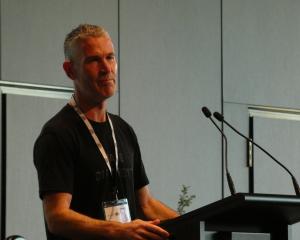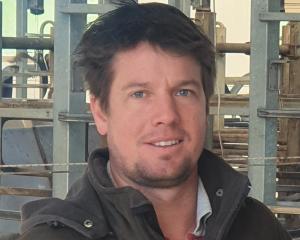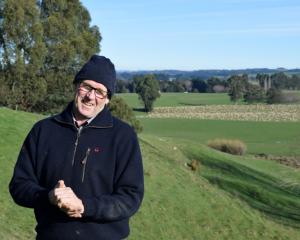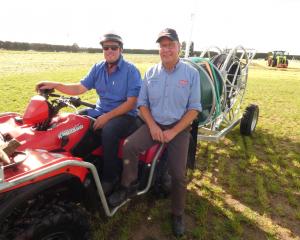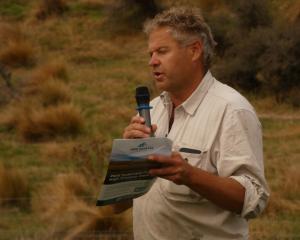
The Pasture Pro app released about a month ago uses ingenious technology to help farmers grow and harvest more grass — an extra two tonnes of dry matter per hectare valued at more than $600/ha.
The agri-tech company is known for its fenceless system using solar-powered cow collars to remotely shift herds around farms.
Capital raisings of $32 million in 2021 and more lately $85m are being ploughed back into a large research programme.
Pasture Pro is a result of last November’s raise led by Bessemer Venture Partners, and existing investors DCVC, Blackbird, Promus Ventures, Rocket Lab’s Peter Beck and Icehouse Ventures.
A future sharemarket listing is off the table at this stage as the company concentrates on pasture and mating technology.
Chief executive and founder Craig Piggott said they were always thinking ahead for long-term plans.
"At the moment our focus is purely just on great investors and good backing from venture capitalists so we’re just heads-up focused on building products, but I would imagine at some point in the future we will start to work out if that will help us to achieve our mission, but definitely not on the radar at the moment."
Mr Piggott said the response to Pasture Pro had been "overwhelmingly positive", despite a payout forecast of $7 a kilogram of milksolids.
While some farmers might hold back from buying, others were looking at the technology as it was a critical period to focus on pasture, he said.
"It’s definitely a tough time for farmers. Given we like new technology and really like to help farmers around this critical variable around how much grass they grow at harvest there’s massive profitability and productivity gains for farmers.
"The biggest barrier for us is getting farmers to adopt a new way of farming and getting them to change things potentially what they’ve done for decades. So the benefit to times like these is that farmers are often looking for things to change and how to drop the cost of production and look to refine and become more efficient."
Pasture Pro combines machine learning, weather data, satellite imagery and computer vision to help farmers make more money from growing and harvesting more grass.

Mr Piggott said Halter did not have a specific "price tag" for the project’s development as it was being worked on in parallel with the weekly development of new products.
"What might be helpful is we are 150 people and half the team is roughly in product engineering. We are investing very heavily into improving the product and releasing new product. It is very true to who we are as a company."
He said Pasture Pro could help farmers move towards the pasture harvest performance of the top 25%.
The app was developed as a result of the company listening to the needs of farmers, he said.
Mr Piggott said grass was the heart of a pasture farm and the single-most variable for being more profitable was harvesting more pasture.
Virtual fencing was built so farmers did not have to rely on paddocks, often the wrong size, so they could allocate any amount of grass. The next limiting factor for farmers was working out the right amount to allocate, he said.
"That’s why we built Pasture Pro as the best complementing product to virtual fencing. It automatically collects all the data you need, feeds you your key metrics and KPIs and enables you to get the most out of virtual fencing. The overall outcome is you grow and harvest more grass."
If post-grazing residuals — grass levels usually at a target of 1500 kilograms of dry matter a hectare after being grazed by cows — were too low, that affects the plants’ ability to have enough reserves left to regrow fast enough. If they are left too high that wastes grass.
Farmers trying to ride this balance usually measure the leftover covers by eye or by plate meter.
Mr Piggott said part of the software told farmers how good a job they had done after they fed a photo taken on their phone.
A machine learning model was trained to look through more than 10,000 photographs of pasture residuals taken by the Halter team and identify the residual based on the farmer’s image.
Combined with other data, this predicted how much grass was available in a paddock daily, he said.

He said failing to make sure the third leaf of ryegrass plants emerged could be costly.
A cow grazing a ryegrass paddock half a leaf early means a 12.5% reduction in total yield and over a year could cost a 500-cow farm $90,000 worth of lost production, when combined with high residuals.
"All these little things add up and this is all about being more efficient and being a higher performing pasture farmer."
Mr Piggot, 29, founded Halter in 2017.
"I grew up on a farm and then studied engineering and I guess I just had an underlying belief that farming could be more efficient, and there wasn’t really anyone targeting how we take the weight of development and tech and apply them to agriculture."
He said the company’s development programme would hold its focus at this stage on the pasture space.
"We are always making the product more accurate and releasing more features so that’s the current focus, and we’re also coming into mating season for a lot of farmers and we’re working with them on heat detection and mating product to ensure their set up for a successful mating.
"At the highest level we’re building more and more product and continuing to work on the Pasture Pro suite. We don’t just ship a product and leave it, we’re always improving it and adding more to it so they grow and evolve."
Further into the future he sees the role of farmers becoming more strategic and focused on making good decisions to work out how they most efficiently run their farms and be more productive and sustainable.
They would evolve to sequester more carbon, burn less fuel and be more grass-based and efficient at growing and harvesting grass.
"Will they be fenceless? For sure, that’s definitely an option.
"It’s hard to predict the future. We try as a company to be led a lot by our customers rather than our own hopes and wishes. We do think Pasture Pro’s the future, otherwise we wouldn’t build it. "




